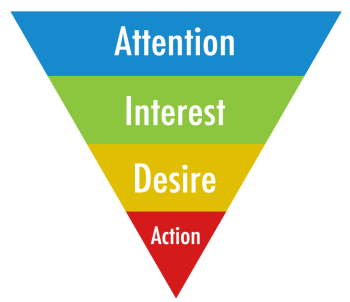How To Grow Your Start-Up FASTER (Proven Techniques)

All start-ups start from zero. Zero traffic, Facebook Likes, zero email subscribers, zero buyers.
Getting your first 100 customers is notoriously difficult because people don’t readily jump onto something new without social proof.
Social proof is a psychological and social phenomenon where people assume the actions of others in an attempt to reflect correct behaviour in a given situation.
So, when we see a business with no followers, reviews or testimonials, we don’t trust it.
My favourite growth hacker Vincent Dignan says that getting the first 500 Likes, followers, subscribers, users — whatever metric is used on the platform at hand — is important because it showcases you’re a known entity.
In order to get that 500 users quickly, Vincent recommends starting with your friends, families and former colleagues.
“They’re the people who are most likely to refer you, most likely to buy whatever you have at the very outset,” he says.
Once you’ve got your first 500 through the friends and family method, you’ll look more reputable once you begin targeting your desired audience.
Here, I’ve listed proven techniques that get your startup off the ground faster …
1. Work only on things that make you money
Split your to-do list into two columns: “Things that make you money” and “Things that don’t”, and then only do the side that directly makes you money and delegate the rest to subject matter experts via sites like Fiverr, Freelancer (great for ad hoc jobs) or onlinejobs.ph (excellent offshore support from Philippines on part-time or full-time basis).
For example, you may find that you’ll make more money by reaching customers via SMS as opposed to writing a blog or an email.
People don’t always read blogs and ignore emails, but they rarely ignore a text. There are Bulk SMS services that help you to send thousands of messages at once, which saves you a lot of time.
You shouldn’t be doing more than is necessary to accomplish your goal. This is why streamlining is so important. For some companies, this means reducing the number of components required by a design, for others, it might mean automating some stages of the process to speed things up, for example, document automation.
The best way to streamline your processes is to create a map leading from your starting point to the result you want to achieve. Now, take a step back and look at each step in turn. Can this step be automated? Can this step be adapted in any way? Is this step even necessary? Asking these questions will help you to establish where you can cut and adapt better.
If you are manufacturing a physical product, you need to think about inventory, demand forecasting, supply chain planning, and more. Due to the cross-functional nature of activities required, consider contacting supply chain consultants. These consultants will help you flag the risks associated with logistics ensuring your business processes and networks are efficient as possible.
2. Build a sales funnel: from free to paid
Sales funnel is the journey of your customers from when they first become aware of your business to ultimately buying from you.
Either you’re an online or a brick-and-mortar business, the best way to quickly grow your revenue is by building a sales funnel.
The goal of your entire sales funnel is to solve your customer’s problem by offering them enticing solutions at each stage.
Below, I’m going to explain what exactly happens during each buyer stage and how can you help people to buy:
Awareness – give away free information
This is when the prospective buyer visits your website for the first time, which they found from an ad, Google search, a post shared on social media or another traffic source.
At this stage, the prospect isn’t always ready to buy. They might just gather information for their future needs.
At the awareness stage, give away useful information for free. Freemium model is huge in today’s tech and knowledge-hungry market.
Useful and delightful blog (or a podcast) helps people to find you, learn from you and eventually trust to buy from you.
Freemium is a common method of up-selling, but most of us don’t even think about it, because we’re too busy being short-sited trying to just make the initial sale.
Interest – build your email list
By this stage, people have enjoyed your content and decided to take the relationship to the next level by signing up to your email list.
This is when they also choose to Like or follow your social accounts or sign-up for a free trial.
Building your email list is one of the best ways to grow a business quickly.
In order for you to increase your chances of converting casual web surfers to potential leads, you need lead magnets.
A lead magnet is a free incentive in the form of an ebook, infographic, course, webinar, VIP access, free trial etc.
A lead magnet is something that your prospect already wants. It can be anything that can educate your prospects on how they can solve their problems and achieve their goals.
There are a whole host of different email marketing platforms such as FloDesk, Mailchimp, and ConvertKit; also – it’s very easy to migrate to a new provider if you outgrow your current plan, so don’t worry about making a definite decision when you’re still finding your feet. Once you’ve set up your email platform you should also consider an email signature generator to help you create a sign-off for each of your emails. You can, of course, make your signatures manually, but they don’t always end up looking like you want them to look and it’s a faff.
Decision – create a demand
During this stage, you can start building the demand for your product, by making people aware of what they need.
Here, the prospects are making the decision that they want to take advantage of your solution. You know this because users are paying more attention to what you offer, including clicking on your offers, spending more time on sales pages, signing up to webinars, or calling you.
The best way to get prospects to the decision-making phase?
Beyond the art of storytelling, persuasive copywriting, and building the habit of link-clicking, you need to have lots of customer reviews and testimonials.
Seeking social proof is human nature.
Testimonials, combined with easy decision-making experience is one of the most powerful ways to get people to take action.
You will also need a steady flow of qualified search traffic to your website at each buyer stage. Check out this SEO trends in 2019 guide to understand the most important basics of search marketing.
Action – offer exceptional customer service
At this stage, the prospect has parted with their cash.
Ensure your customer service is exceptional by going the extra mile. Your customers will not only be delighted by great service, they will also be more likely to refer other people to you.
3. Build a predictable sales and marketing model
Once you have a large pool of customers with different needs, you need big data to manage each buyer touchpoint at scale.
It sounds daunting, but it doesn’t have to be.
You already have data about your existing customers, but you may not make the most of it.
By understanding your customers better, you can increase your revenue quicker.
When you have a full understanding of different buyer personas (and their motivations to buy), it becomes simpler to automatically target your customers with personalised messages at scale using software like Marketo, for example.
A good understanding of the continuous retail digital transformation can help you build a solid sales and marketing strategy that enables you to reach wider audiences and build a successful brand.
You can’t have the same sales funnel for all your customers, because people are different.
Now, businesses can change the content of their entire website to suit the person that is visiting. For example, if someone is identified in your database as a customer of product A but not product B, the content of the website will change to address this.
4. Raise your prices
To boost profits, you can also just raise your profits.
So if you have not increased your prices within the past few years, now could be the time.
You will find that a 5% increase can often be an easy and effective way of improving profits without any market resistance.
Customers expect that prices are going to be increased at some point, as long as it’s not on a regular basis. After all, expenses rise and the market fluctuates.
If you offer a quality product or service, it’s highly unlikely that your customers will jump ship. You can also look into strategies like price skimming, which can help you to drive sales and boost profits as well.
5. Create a customer loyalty program
Now that you have a large customer base, who are starting to understand your value proposition, you can finally afford to expand your company and invest in new initiatives.
Customer retention should be your next priority.
When businesses experience fast growth, distracted entrepreneurs tend to focus on customer acquisition at the expense of customer retention.
This isn’t financially smart, because it costs up to three times more money to acquire new customers than it does to sell something to an existing one.
Hence, at this stage customer retention should be more important than customer acquisition.
Loyalty and referral programs are great ways to retain customers and increase sales.
BONUS: License a business that already exists: franchisement
If you want to bypass branding and marketing altogether (which takes a lot of time, effort, and skill), you can simply buy rights to a business that already exists.
A franchise business is a business model in which a franchisee pays a franchisor for the right to use the franchisor’s business model, brand, and products or services in a specific geographic area.
The franchisor provides the franchisee with support, training, and access to marketing materials and other resources to help them run their business.
In a franchise business, the franchisor sets the rules and standards that the franchisee must follow in order to operate their business. This can include everything from how the business is run and managed to the products and services that are offered. The franchisee is typically responsible for the day-to-day operations of the business, while the franchisor provides ongoing support and guidance.
You can browse these opportunities on www.franchiselocal.co.uk to see if there is something suitable for you.
Finally,
Your sales funnel is never complete – customers are always evolving.
If you want to grow quicker, you need to gather and analyse data and actually speak to your customers regularly.
Listening to your customers not only improves your services, but it can also help you to develop a new offering and complementary products.
Customers are the most important stakeholders in your business.
Without customers paying you, you wouldn’t have your business in the first place.



